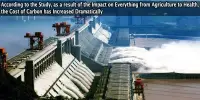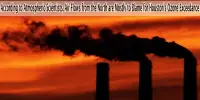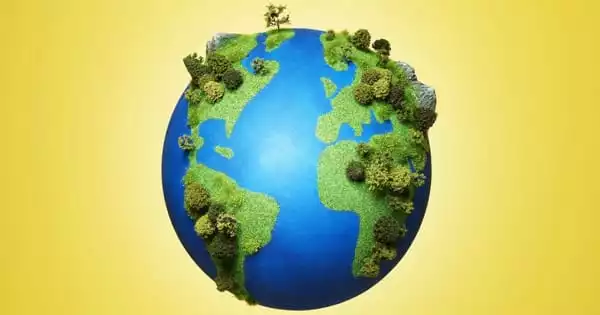The greatest loss of biodiversity in Earth’s history occurred during the Permian extinction, also known as the Permian-Triassic extinction or the end-Permian extinction. According to Britannica, almost 95% of marine species and 70% of terrestrial species were wiped off during this extinction.
“For a period of time the whole planet was overheated and that quite likely contributed to this major killing of life on our planet,” says Professor Wolfram M. Kürschner at the University of Oslo.
The nature of this event has been debated, but a recent study by Kürschner and colleagues, published today in PNAS, illustrates how the climate and marine and terrestrial ecosystems 252 million years ago may have been affected by a significant and sudden spike in CO2 driven by volcanism.
“For a couple of years we have had good evidence for a dramatic temperature rise associated with the mass extinction. Until now we had only a limited understanding of the causes,” Kürschner says to Titan.uio.no.
Earth system modeling and carbon isotope records
Using an Earth system model, the study calculated the changes in the global carbon cycle. The Siberian Traps volcanism is thought to be the cause of this huge release of carbon, according to new compound-specific carbon isotope records entered into the model. Astronomical cycles are used to date the carbon isotope record in order to more accurately determine the rates of change.
Our calculations show that two major pulses of volcanic CO2 release are the main source for the rise in atmospheric CO2. It increased from about 400 ppmv to about 10.000 ppmv and thereby caused the very dramatic temperature rise at the time of end-Permian mass extinction event.
Professor Wolfram M. Kürschner
Lipids that had been isolated from organic matter served as the biomarkers for the carbon isotope studies. On the Finnmark Platform, to the north of Norway, terrestrial plants and marine algae trapped in sedimentary rocks formed this organic material.
“Until now it was difficult to pinpoint the source, the amount and the rate of the carbon released to the atmosphere. Our new model calculations suggest that the main source of carbon is mainly of volcanic origin as different carbon sources have very different carbon isotope signatures,” Kürschner explains.
The model calculations were further improved by including recent studies of seawater acidity (pH) based boron isotopes.
“Our calculations show that two major pulses of volcanic CO2 release are the main source for the rise in atmospheric CO2. It increased from about 400 ppmv to about 10.000 ppmv and thereby caused the very dramatic temperature rise at the time of end-Permian mass extinction event,” Kürschner says.
The sixth mass extinction and modern anthropogenic climate change
A significant decrease in biological diversity has been caused by human presence. Some refer to it as the sixth mass extinction. Along with other factors like environmental contamination and the eradication of rain forests, climate change is a significant factor.
Kürschner believes that while being from a distant geological history and being of a different size than the current climate change, what happened more than 250 million years ago is extremely relevant to today.
“This event in the geological history can be used to better understand the effects of the current anthropogenic climate change, or as we geologist say: The past is the key to understand the future.”
The rise in atmospheric CO2 will continue for the upcoming decades even if we immediately stop burning fossil fuels.
“This has an impact already now on our present climate as we have seen this summer with extreme weather conditions, for example the heavy rainfall and flooding in Germany, Belgium and The Netherlands, and the extreme heat and drought in southern Europe.”
“The effects will not be of such an extreme order as it was 250 million years ago, but it will absolutely influence the climate and the ecosystems on our planet,” Kürschner says.
















